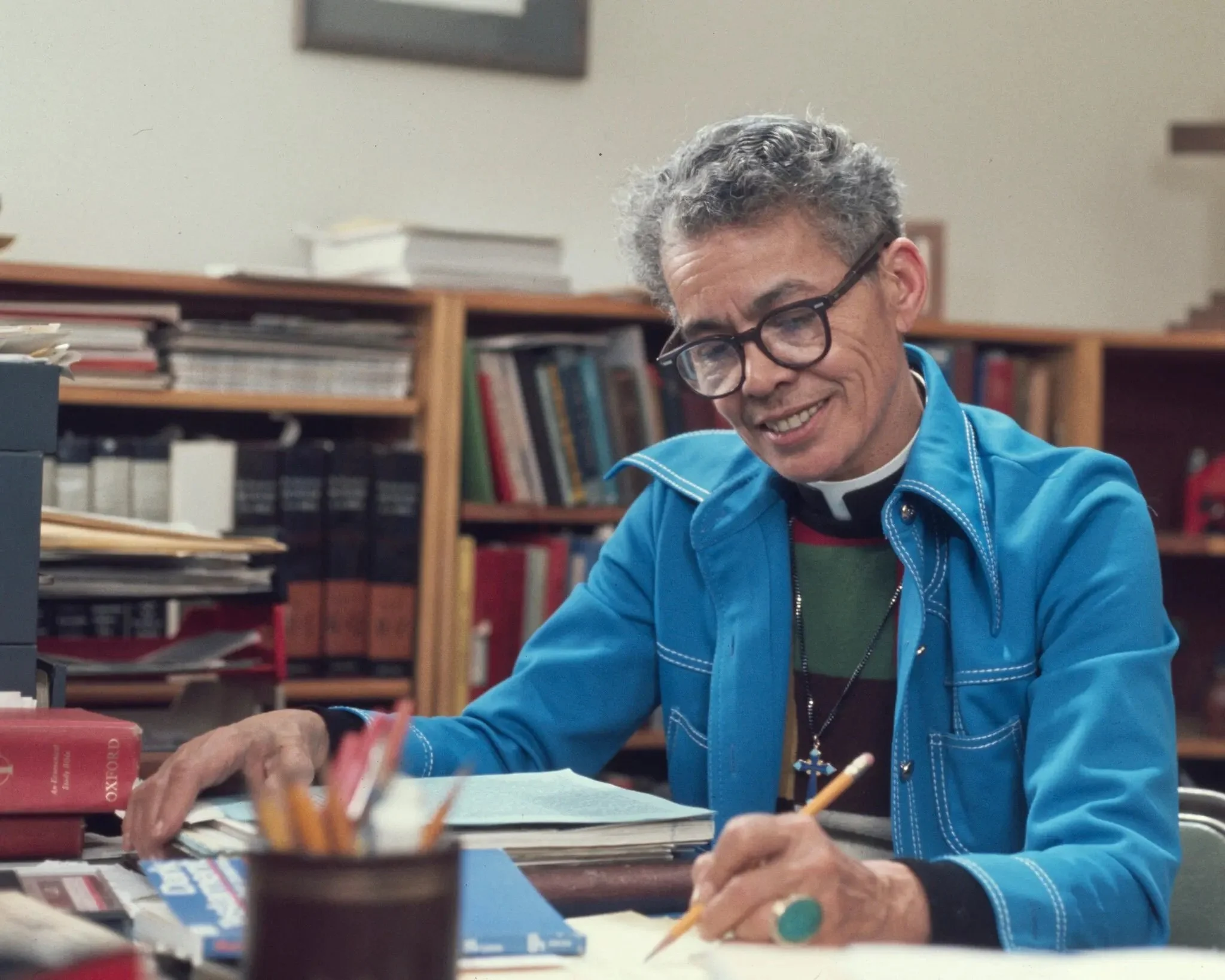The Pauli Murray Center is thrilled to share that Pauli Murray, the pioneering activist, scholar, poet, and priest, will be featured on a series of U.S. quarters beginning in 2024 as part of the U.S. Mint’s American Women Quarters Program. The program, which began in 2022, celebrates figures in U.S. history who have made outstanding contributions to American civil rights, history, art and culture, science, and more. Murray will be honored alongside Patsy Takemoto Mink, Dr. Mary Edwards Walker, Zitkala-Ša, and Celia Cruz. The designs will be released in mid-2023.
This recognition presents an opportunity to explore Pauli’s own writing, and more recent scholarship, about their relationship to gender and womanhood. We do not and can never know Murray’s gender identity – Pauli Murray described themself as a “he/she personality,” requested hormone therapy, and also self-described as a woman. The Pauli Murray Center currently uses she/her and they/them pronouns when discussing Dr. Murray’s life. We encourage those interested to explore the many resources about Pauli Murray, gender, and pronouns, including Dolores Chandler’s Pauli Murray: Black Revolutionary and Simon D. Elin Fisher’s Pauli Murray's Peter Panic: Perspectives from the Margins of Gender and Race in Jim Crow America.
The Pauli Murray Center hopes that this unique honor will encourage those who might come across a Pauli Murray quarter to learn about their vision for a just world – including exploring Murray’s legal impact, activism, scholarly and poetic writing, and her legacy in Durham and beyond.
About the Pauli Murray Center
The Pauli Murray Center for History and Social Justice engages diverse communities to lift up the life and legacy of Black activist, legal scholar, feminist, poet, Episcopal priest, and LGBTQ+ community member, the Rev. Dr. Pauli Murray, in order to address enduring inequities and injustice in our nation.
The Pauli Murray Center is a National Historic Landmark site anchored by Pauli Murray’s childhood home in Durham, North Carolina. The home stands on its original site, a one-acre plot, in the historically Black working class West End neighborhood. We are becoming a fully operational, visitor-ready site. Over the next few years, we will completely rehabilitate and create an accessible historic home and education center; build on our robust calendar of workshops, both on the ground and virtually; host community dialogues and invitations to action; and lead creative arts programming.













